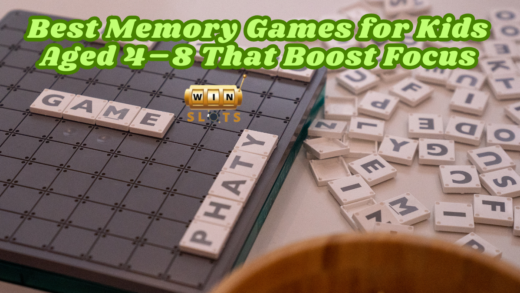How To Play Yahtzee – Step into the world of Yahtzee, a delightful dice game that seamlessly blends luck, strategy, and a touch of mathematical intuition. Whether you’re an experienced player or new to the game, Yahtzee promises an enjoyable experience for players of all ages.
This article serves as your comprehensive guide on how to play Yahtzee, covering everything from the necessary equipment to the fundamental rules that will have you rolling the dice, contemplating your moves, and celebrating those elusive “Yahtzee” moments. So, gather your scorecards and dice, and let the adventure of Yahtzee unfold uniquely for you.
Discovering Yahtzee
Let’s explore the fun game of Yahtzee together, It’s a cool dice game where you roll five dice in turns for thirteen rounds, trying to get the best scores on your card.
The Goal Of Yahtzee
Yahtzee’s main goal is to do better than your friends by making the best dice combinations on your scorecard throughout the thirteen rounds.
Who Can Play?
Even though they say it’s best for ages eight and up, younger kids can enjoy it too if they know some basic math, especially adding numbers.
What You Need To Play
To play Yahtzee, you don’t need the whole game set. All you need are:
- Five regular dice
- A Yahtzee scorecard for each player (you can print one for free)
- Easy-to-follow instructions and rules (which we’ve got below)
What You Learn
Playing Yahtzee is not just fun; it helps you get better at:
- Math stuff like adding, multiplying, and understanding chances
- Making good decisions and thinking carefully
How To Play Yahtzee
Get a Group of 2-4 Friends
Yahtzee is more fun when you play with 2 to 4 people. If you play alone, you’re just trying to beat your own score. And if there are more than four players, it can take a long time for everyone to take their turns.
Grab 5 Dice and Your Own Yahtzee Scorecard
To play Yahtzee, you’ll need five dice. Each player should have their own Yahtzee scorecard to keep track of their rolls and points. You can print one for each player to make it easy.
Decide Who Goes First with a Dice Roll-Off
To determine who gets the first turn, everyone rolls their set of five dice and adds the dots. The person with the highest total goes first, and then the game goes in a circle, with each person taking turns clockwise.
Engage in a turn with the opportunity for up to three dice rolls.
Each is aimed at refining your hand strategically. Throughout the turn, players can leverage these rolls to enhance their hands, striving to achieve the most favourable score on their scorecard.
Here’s a breakdown of the rolling process:
1st Roll: Roll all five dice. Should the outcome be satisfactory, the player can promptly score it. Alternatively, they have the option to reroll any or all dice in an effort to optimize their hand.
2nd Roll: Opting to improve their hand, players can either reroll the entire set of dice or designate certain “keeper” dice that remain untouched.
Following this, they roll the remaining dice to refine their hand further. If pleased with the result, they can score it immediately or choose to proceed to a third roll for additional enhancement.
3rd Roll: Players can once again set aside keeper dice if a third roll is chosen. They have the flexibility to reroll any or all dice, including those kept in the second roll. The outcome of this third and final roll must be scored to conclude the round.
Illustrative Rolls:
- 1st Roll: 2, 2, 3, 5, 1. Opting for improvement, the player proceeds to a second roll.
- 2nd Roll: Keeping 2, 2 and rerolling the rest results in 6, 6, 4. The hand transforms into 2, 2, 6, 6, 4. Choosing to further optimize it, the player moves to a third roll.
- 3rd Roll: Holding onto 6, 6, the player rerolls the remaining three dice, revealing 6, 1, 3. The final hand culminates in 6, 6, 6, 3, 1.
Pick Where to Write Your Score on the Scorecard
When your turn is done, you need to decide where to put your score on the scorecard. You have 13 options, but you can only use each option once, so choose carefully.
The scorecard is divided into the Upper Section and the Lower Section.
Upper Section
Here, you add up the dice that show the same number. For example, if you roll 5, 5, 4, 6, 3, and you choose the “fives” category, you get ten points (5 x 2), and the other dice don’t matter. If you get more than 63 points in the number categories, you can even get a bonus of 35 points.
Lower Section
This part is about special combinations of dice. Some categories add up all the dice you rolled (like three of a kind, four of a kind, full house, and chance), while others have set values (small straight, large straight, and Yahtzee).
For more details, check out the scoring section, which also explains how to score extra Yahtzee rolls for a bonus and what to do with the rest of the board using the “Joker Rule.”
Keep Going in a Circle to Finish the Round
After one player finishes their turn, the game moves to the next person in a circle. When everyone has had their turn, that completes one round.
Keep Playing for 13 Turns
The game continues for 13 turns, and each time it goes in the same order. But be careful; you can only use each scoring option once, so your choices get less as you go. The game ends when everyone finishes all 13 turns.
Add Up the Scores to Find the Winner
When everyone is done playing and scores all their turns, it’s time to see who wins. Follow the scoresheet instructions, add the points, and the player with the most points is the winner.
Yahtzee Scoring Guide
Let’s dive into how to score in Yahtzee with simple explanations and easy examples to help you fill out your scorecard.
Upper Section
In the upper section, you just need to count the dice that match a specific number for each category.
- Ones: Add up all the ones you rolled. For example, if you roll 1, 1, 3, 6, 5, your score is 2 (1+1).
- Twos: Count all the twos. If your roll is 2, 2, 2, 4, 5, your score is 6 (2+2+2).
- Threes: Add all the threes. For a roll like 3, 3, 5, 6, or 4, your score is 6 (3 + 3).
- Fours: Add all the fours. For instance, if you roll 4, 4, 4, 4, 3, your score is 16 (4+4+4+4).
- Fives: Add all the fives. Imagine a roll of 5, 5, 5, 3, 4, your score is 15 (5+5+5).
- Sixes: Add all the sixes. If you roll 6, 6, 6, 3, and 2, your score is 18 (6+6+6).
Total Score Tally: At the end of the game, you just add up the scores for Ones through Sixes. It might be easier to think of it as “Subtotal – Upper Section.”
Bonus Boost: Get a bonus of 35 points if your total for Ones through Sixes is 63 or more. You need to roll at least 3 of each number on average to get this bonus.
Upper Section Finish: Just add up your scores for each number and enjoy the bonus if you earned it.
Lower Section
Three of a Kind: Gather three dice showing the same number. Add up all the dice, not just the matching ones. For example, if you roll 3, 3, 3, 6, and 4, your total would be 19, not 9.
Four of a Kind: Aim for four dice with the same number. Add up all the dice, not just the ones with the same number. If you roll 1, 1, 1, 1, 6, your score would be 10, not just 4.
Full House: Make a mix of three of a kind and a pair to score 25 points. For instance, 5, 5, 5, 3, 3 is a full house and scores 25 points (not 21, as the specific dice values don’t matter). Note: The three-of-a-kind and the pair must be different numbers.
Small Straight: Make a sequence of four numbers in a row (like 2, 3, 4, 5) for 30 points. Remember, the sequence can’t wrap around, like 4, 5, 6, 1.
Large Straight: Create a sequence of five numbers in order (like 1, 2, 3, 4, 5 or 2, 3, 4, 5, 6) for 40 points. Note: The sequence can’t wrap around, like 4, 5, 6, 1, 2.
Yahtzee: Roll five dice with the same number (like 1, 1, 1, 1, 1; 2, 2, 2, 2, 2) to score 50 points in Yahtzee.
Chance: This is a flexible category where you can score any combination by adding up the points. For example, a roll of 5, 5, 5, 3, and 2 would score 20 points (5+5+5+3+2).
Yahtzee Bonus: It’s not a direct scoring spot, but it gives bonus points when you get more Yahtzees. If your Yahtzee category already has 50 points, you get a bonus of 100 points. You also get to score it in another category, following the “Joker Rule.”
Total of Lower Section: Add up all the points from the lower section.
Total of Upper Section: Write down the score from the “Total of Upper Section.”
Grand Total: This is your overall score.
Yahtzee Score Card

Deciding the Winner
As the game finishes, and everyone completes their thirteen turns by filling in all the scorecard categories, it’s time to find out who wins.
Here’s how you figure out the scores:
Upper Section: Write down the total from the Upper Section in its special total score box. If someone gets 63 or more points in the Upper Section, they get a bonus of 35 points.
Lower Section: Put down the total from the Lower Section score in its own total score box. Also, add 100 points for every check in the Yahtzee bonus box.
Grand Total: Add up the scores from both the Upper and Lower Sections. This total is the player’s overall score for the whole game.
The player with the highest total score is the winner. If there’s a tie, everyone who tied shares the victory.
How to Win In Yahtzee
While some think Yahtzee is mostly about luck, with the winner just getting lucky rolls, it’s important to know that skill is also a big part of it.
Making smart decisions is key, like choosing which dice to keep or reroll, picking the scoring categories to go for, and deciding which ones to use. All these choices really affect your chances of winning.
In a forum, someone shares the best strategy for different starting roles. Remembering all the details might be tricky, but my overall takeaway from using the analyzer on my own game is:
Try to get Yahtzee early by focusing on higher numbers when playing Yahtzee.
For example, if you have two sixes in a roll of 6, 6, 3, 3, and 2, it’s better to keep those sixes instead of going for a full house. Getting Yahtzee in the next two rolls might be tough, but you can also get more sixes or score in the chance category.
Focus on the categories with numbers 4, 5, and 6 to get a bonus.
You get a bonus of 35 points if your total in these categories is 63 or more. To reach 63, try to roll more than three of the numbers 4, 5, or 6 in these categories.
Take advantage of scoring opportunities in the lower section.
Go for it if you get a large straight in the early game. If you have a small straight, keep a pair if you have one; otherwise, keep the highest number and reroll the rest. However, if you have an open-ended straight like 2, 3, 4, 5, keep it.
Don’t worry too much about low scores in some categories, especially later in the game.
Categories like Aces don’t contribute much to your total score or the bonus, so it’s okay not to score high in them. Later on, skipping scoring in the Yahtzee or four-of-a-kind categories is okay.
Look out for chances to make open-ended straights.
You have a good chance of getting a large straight if you have four numbers in a row, like 2, 3, 4, or 5. It’s worth considering even if you only have three numbers in a row, like 2, 3, 4, or 3, 4, and 5 on the first roll.
How To Play Yahtzee Video Guide
Recommendation
Farkle Rules: How To Play Farkle
How To Play Mash: Mansion Apartment Shack House
How To Play Jenga: Rules, Strategy & More
How To Play Crazy 8: Rules, Tips, Variations & More
How To Win Mancala: Easy Guide To Master Mancala
How To Play Garbage Card Game AKA Trash Card Game
Wordfinderx: Your Secret Weapon for Word Puzzles
Is Mario Football 2024 Going to be The Next Game: Watch Mario Football 2024 Trailer
How To Play Bunco: A Step By Step Guide
How To Play 4 Corners Game: A Complete Guide
Conclusion
In conclusion, Yahtzee, a delightful blend of luck and strategy, offers an enjoyable experience for all ages. This comprehensive guide on how to play Yahtzee covers everything from essential rules to strategic insights. So, gather your dice and scorecards, embark on the adventure, and may your Yahtzee moments be both thrilling and strategically rewarding.
FAQs
Q: When was Yahtzee Invented?
A: During the 1950s, an unidentified Canadian couple developed a game that eventually became known as Yahtzee. They initially referred to it as the “Yacht Game” because it was a favourite pastime on their boat. The game was officially introduced as Yahtzee in 1956.
Q: What does Yahtzee mean?
A: Yahtzee, a dice-based game, gets its name from the inventive combination of the term “Yacht,” initially coined by its creators. There’s speculation that the name was altered to “Yahtzee” upon the game’s acquisition by a larger company. In the context of the game, “Yahtzee” signifies the entire game and represents a particular roll featuring five identical dice, earning 50 points initially and an additional 100 points for each subsequent instance.
Q: Can you play Yahtzee with two players?
A: You can engage in a game of Yahtzee with a minimum of 2 players; for larger groups, team play is an available option. The game kicks off by determining the starting player or team, a process achieved by having each participant or group roll all five dice.
Q: How many turns are there in Yahtzee?
A: The game unfolds in thirteen rounds, with each round initiating the roll of five dice. To start the first round, press the “Roll Dice” button and the “Next Round” button for all subsequent rounds.



